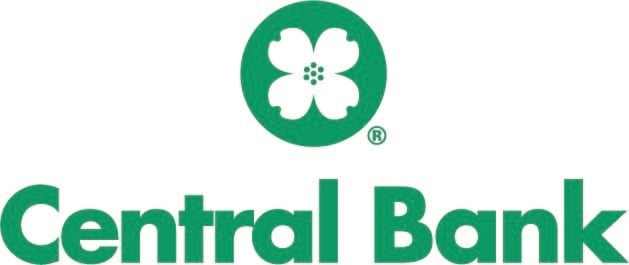About These Rates: The lenders whose rates appear on this table are NerdWallet’s advertising partners. NerdWallet strives to keep its information accurate and up to date. This information may be different than what you see when you visit a lender’s site. The terms advertised here are not offers and do not bind any lender. The rates shown here are retrieved via the Mortech rate engine and are subject to change. These rates do not include taxes, fees, and insurance. Your actual rate and loan terms will be determined by the partner’s assessment of your creditworthiness and other factors. Any potential savings figures are estimates based on the information provided by you and our advertising partners.
A Beginner’s Guide to 30-Year MortgagesWhat is a 30-year mortgage?
A 30-year fixed-rate mortgage is a home loan designed to be paid off in 30 years. It provides the security of a consistent principal and interest payment, and the flexibility to afford a larger mortgage loan because the payments are lower than for a shorter-term mortgage for the same amount.
Pros and cons of a 30-year fixed mortgage
The 30-year fixed mortgage is the most popular term of home loan. It meets the needs of many borrowers, but some people prefer shorter loan terms. Here are benefits and drawbacks of the 30-year mortgage:
Pros
Lower payments. Because they’re spread out over 30 years, the monthly payments on a 30-year fixed mortgage are lower than for loans with shorter terms.
Flexibility. If your monthly budget allows, you can make extra payments to pay off the loan faster. When money is tight, you can make the minimum payments.
Predictability. Because it’s a fixed rate, the monthly principal and interest payments are the same over the life of the loan. Property taxes and insurance can change over time, though.
Bigger loan. Because monthly payments on a 30-year loan are smaller than on a shorter-term loan (such as 20 or 15 years), you can borrow more.
Cons
Higher interest rate. Because the lender is tying up its money longer, 30-year fixed mortgage rates are higher than on loans with shorter terms, such as 15 years.
More interest overall. You pay more interest over the life of a 30-year mortgage because you make more payments.
You risk borrowing too much. A 30-year loan lets you borrow more, which could tempt you into taking out a loan that’s too big. Or you might be able to afford the monthly payments, but lack money for vacations, dining out and other discretionary spending.
How to find 30-year mortgage rates today
Today's mortgage rates can be found via NerdWallet’s mortgage rate tool at the top of this page. It can help you find 30-year fixed mortgage rates today that are tailored to meet your needs. In the filters above, enter details about the loan you’re looking for, and you can see an interest rate quote without providing personal information.
30-year mortgage rates vary over time and by lender
30-year mortgage rates vary day to day and even hour by hour. You can save money by comparison shopping because each lender offers its own combination of interest rate and fees. The loan offer with the lowest interest rate isn't necessarily the best. Lenders charge fees to offset expenses and add to their bottom lines. These closing costs can vary a lot from one lender to another, and they aren't necessarily spelled out until you formally apply for a loan.
How to compare mortgage offers
If you’re approved, each lender will provide you with a Loan Estimate form. This will let you compare interest rates, origination fees and closing costs, giving you confidence that you’re getting the right loan for your situation
The Loan Estimate is a three-page document that provides the loan's details, projected payments and closing costs. Page 3 of the Loan Estimate has a section labeled "Comparisons." It's designed to simplify comparing loan offers. It provides three subheadings:
"In 5 Years" totals how much you would spend on the mortgage in its first five years, including closing costs, principal, interest and mortgage insurance. A lower number is better.
"Annual Percentage Rate (APR)" is a way to express the interest rate that takes closing costs into account. A lower APR is better.
"Total Interest Percentage (TIP)" measures the total interest you would pay as a percentage of the loan amount. A lower TIP is better.
A Freddie Mac report concluded that a typical borrower can expect to save $600 to $1,200 annually by comparison-shopping four lenders instead of applying with just one lender.
How mortgage rates are set
Mortgage rates are determined by market forces: Bad economic or global political worries can move mortgage rates lower. Good news can push rates higher.
Lenders fine-tune your mortgage rate based on risk. The higher your credit score and the bigger your down payment, the lower your mortgage tends to be.
The difference between interest rate and APR
The interest rate is the percentage that the lender charges for borrowing the money. The APR, or annual percentage rate, takes fees and discount points into account.
APR is a tool used to compare loan offers, even if they have different interest rates, fees and discount points.
Learn more about fixed-rate loans:
About the author: Holden is NerdWallet's authority on mortgages and real estate. He has reported on mortgages since 2001, winning multiple awards.
NerdWallet writers are subject matter authorities who use primary, trustworthy sources to inform their work, including peer-reviewed studies, government websites, academic research and interviews with industry experts. All content is fact-checked for accuracy, timeliness and relevance. You can learn more about NerdWallet's high standards for journalism by reading our editorial guidelines.
Check out our other mortgage and refinance tools
Explore more quotes
Mortgage rates by loan type
Mortgage and refinance rates by state









